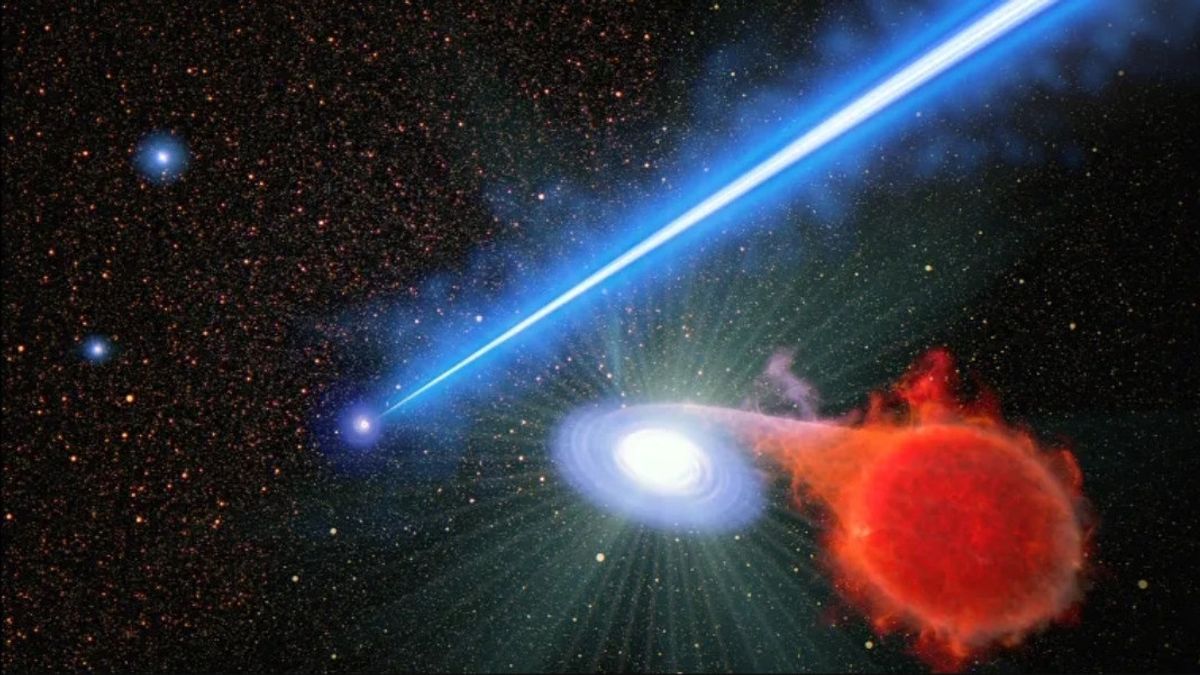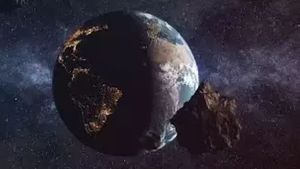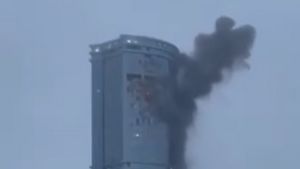JAKARTA Astronomers managed to find an unusual space phenomenon thanks to NASA's Hubble Space Telescope. These findings show the impact of a plasma jet that is smeared in a black hole.
It is natural law, any star of any mass will be destroyed when it is near a supermassive black hole due to its enormous gravitational drag. Despite its wide range of gravity, destroyed stars are usually near the object.
However, astronomers recently discovered black holes were able to give birth to novae, a Latin term for star explosions that occurred in large numbers. Surprisingly, all of these stars are not trapped in black hole bursts.
This phenomenon occurs in a supermassive black hole inside a giant elliptical galaxy called Messier 87 (M87). This astronomical object launched a 3,000-year-long plasma jet of light in a very short time, even close to the speed of light.
According to astronomers, any object trapped in an energetic beam originating from the supermassive black hole will catch fire. Therefore, the plasma jet that is emitted is capable of creating novae events.
This finding is very interesting to astronomers, as well as surprising. Alec Lessing, the lead author of the study, stated that these findings show that human understanding of objects in space is still lacking.
"We don't know what happened, but this is a very interesting finding," Lessing said, quoted from NASA's official website. "This means something is missing from our understanding of how black hole jets interact with their environment."
It is not yet known how this plasma jet can pass so far and destroy many stars. There is a possibility that black hole jets heat the dwarf companion star and cause the star to overflow further and spill more hydrogen into the dwarf.
"That could be the effect of light pressure coming from the jet. When you distribute hydrogen faster, you get faster eruptions. Something may double the rate of mass displacement to white dwarfs near the jet," explains Lessing.
This is not the first time a strange phenomenon has occurred in M87. In 1990, shortly after Hubble was launched, it was noted that black holes in the galaxy often experienced unusual things.
With the emergence of these new findings, Hubble shows M87 is still working mysteriously for more than two decades. To date, scientists are still trying to solve the phenomenon that occurred in the supermassive black hole
The English, Chinese, Japanese, Arabic, and French versions are automatically generated by the AI. So there may still be inaccuracies in translating, please always see Indonesian as our main language. (system supported by DigitalSiber.id)













